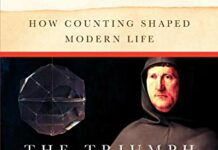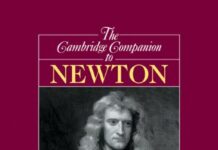
Ebook Info
- Published: 1983
- Number of pages: 424 pages
- Format: PDF
- File Size: 4.55 MB
- Authors: I. Bernard Cohen
Description
This volume presents Professor Cohen’s original interpretation of the revolution that marked the beginnings of modern science and set Newtonian science as the model for the highest level of achievement in other branches of science. It shows that Newton developed a special kind of relation between abstract mathematical constructs and the physical systems that we observe in the world around us by means of experiment and critical observation. The heart of the radical Newtonian style is the construction on the mind of a mathematical system that has some features in common with the physical world; this system s then modified when the deductions and conclusions drawn from it are tested against the physical universe. Using this system Newton was able to make his revolutionary innovations in celestial mechanics and, ultimately, create a new physics of central forces and the law of universal gravitation. Building on his analysis of Newton’s methodology, Professor Cohen explores the fine structure of revolutionary change and scientific creativity in general. This is done by developing the concept of scientific change as a series of transformations of ecxisting ideas. It is shown that such transformation is characteristic of many aspects of the sciences and that the concept of scientific change by transformation suggests a new way of examining the very nature of scientific creativity.
User’s Reviews
Editorial Reviews: Review ‘In The Newtonian Revolution, I. Bernard Cohen has written the most provocative and original book in the history of science to appear in years.’ Horace Freeland Judson, The Sciences’ … a major event in the historiography of science.’ Richard S. Westfall, Nature
Reviews from Amazon users which were colected at the time this book was published on the website:
⭐This book is useful as a survey text. But it tries to be more by introducing two grandiose historiographical schemes: “the Newtonian style” and the notion of “transformation of ideas”.The Newtonian style is an attempt at characterising the relation between mathematics and physics in Newton (in effect: do idealised mathematics first and worry about physical reality and causes second). I would encourage any potential readers to instead study Newton’s mathematical and physical works themselves, keeping in mind that “Newton was always first and foremost a mathematician” (p. 101), after which Cohen’s longwinded analysis will be seen to be void of any novelty.As for the “transformation of ideas”, this framework seems to me to be trivially true at best. Of course Newton did not concoct the Principia out of thin air but rather relied on the work of others, whose ideas he “transformed” in brilliant ways. But to elevate the study of the transformation of ideas to a historiographical dictum, as Cohen pretty much suggests, has some clear dangers. For one thing, the way scientists absorb and transform contemporary ideas seem to be, as a rule, fortuitous and hard to rationalise. Newton is typical in this respect: he “read very little of Kepler’s writings” (p. 189) and “was but imperfectly acquainted with Galileo’s writings” (p. 195), blatantly misrepresenting the latter’s view in the Principia, for example. Another danger is to make too much of terminology; to try to trace antecedents of Newton’s terms, for example, which Cohen is very fond of. Given Newton’s (and other’s) erratic reading habits, there is good reason to think that many of the connections that are uncovered are accidental.Now I will take issue with a specific instance where Cohen has been misled by his transformational goggles. Cohen claims that Newton conceived of solar gravity first, and interplanetary gravity only later as a result of the third law, action=reaction. This he fits into a transformational mould: “The transformation that yielded the Newtonian mutual force of sun and planets from the Hookean concept of a solar centripetal force acting on a planet—a transformation produced by the application of the general Newtonian law of action and reaction (itself a generalisation by transformation of a rule for impact)—was a step of the greatest significance in the history of science.” (p. 261).I say: this step does not exist. Indeed, Cohen admits openly that “we have no direct evidence to support this point of view” (p. 267). His indirect evidence rests on the observation that Kepler’s law are strictly speaking false in Newtonian dynamics (while of course true if gravity is confined to the sun). This pedantic observation is nothing but “minutiae”, as Newton himself said (p. 265). Nevertheless, some fools (e.g. Popper and his clan) have insisted on attaching the utmost importance to this trivial minutiae, and have drawn the most absurd consequences from this heedlessness of theirs. Now Cohen joins this growing cluster of fools.The historical evidence is as follows. In the De motu of 1684, Newton stated the law of ellipses without qualification. Later he revised it to discuss perturbation effects as well, and naturally he then introduced this discussion by noting that the law of ellipses is of course false in general. According to Cohen, Newton actually thought that the law of ellipses was strictly true when he wrote the 1684 version and some time later he supposedly had the great epiphany of universal gravitation and wrote the second version. In my opinion this account is extremely implausible on scientific grounds but we don’t have to go into that since Cohen’s textual evidence can be trivially refuted on the basis of the facts he himself supplies. Cohen’s interpretation runs in to trouble at once, since Newton did not alter the statement of the law of ellipses in the revised version even though he was obviously aware by then that is was strictly false. Cohen has to explain this away:”Newton composed the new [text] without carefully rereading the whole text of De motu. He would thus not have been aware that the new paragraph contradicted the prior scholium … which accordingly would have required major revision.” (p. 267).Now Cohen has painted himself into a corner: his interpretation hinges on the assumption that Newton would not state the law of ellipses unequivocally if it was strictly false, not even as a convenient shorthand when it obvious from the proof that it only applies to one-body systems. But Newton used such shorthand language all the time, as have everyone else ever since. Cohen is forced to be blind to this fact to save his interpretation, even when he himself quotes a perfect example of such a mode of expression in the Principia: “The common center of gravity of the earth and moon traverses an ellipse about the sun, one in which the sun is located at a focus” (p. 274). This is a crystal clear statement of a strictly false theorem right in the Principia, occurring not at the idealised mathematical stage but well into book three, after the perturbation effects of Jupiter etc. have been introduced. Thus no evidence whatsoever remains to support Cohen’s reconstruction of the genesis of universal gravitation.
⭐
Keywords
Free Download The Newtonian Revolution: With Illustrations of the Transformation of Scientific Ideas (The Wiles Lectures) in PDF format
The Newtonian Revolution: With Illustrations of the Transformation of Scientific Ideas (The Wiles Lectures) PDF Free Download
Download The Newtonian Revolution: With Illustrations of the Transformation of Scientific Ideas (The Wiles Lectures) 1983 PDF Free
The Newtonian Revolution: With Illustrations of the Transformation of Scientific Ideas (The Wiles Lectures) 1983 PDF Free Download
Download The Newtonian Revolution: With Illustrations of the Transformation of Scientific Ideas (The Wiles Lectures) PDF
Free Download Ebook The Newtonian Revolution: With Illustrations of the Transformation of Scientific Ideas (The Wiles Lectures)


